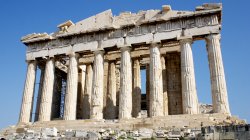
University Calendar
Classics Day

The Department of Classics and General Humanities at Montclair State invites high school Latin students and their teachers to our annual Classics Day. The program begins at 9:00 a.m. with welcoming remarks and orientation. The presentations begin at 9:30 a.m. and occur in two sessions. You will have the opportunity to attend two out of four presentations. Groups of ten or more will be divided among different presentations. Following these, at 11:20 a.m., students who are participating in the completion will go to the assigned room for the half-hour contest in Latin grammar, mythology and Roman Civilization.
THE PRESENTATIONS
"My Fair ________. The Pygmalion-Galatea theme, West and East.”
Jean Alvares, Associate Professor, Department of Classics and General Humanities
The "hero" theme is very important in myth and literature. But the Pygmalion-Galatea theme, where a (usually male) X makes/remakes a (usually female) Y, is at least as universal, from the artist making statues which come alive, to professors remaking flower girls, to a Japanese waiter’s miraculous Nozomi (= Hope). You will see how, at various points in your life you are Pgymalion, and other times Galatea.
"How to Rule the World: From Roma to Madrid: The Building of the Roman Empire in Hispania to the Spanish Empire in the New World"
Raymond Capra, Adjunct Professor, Department of Classics and General Humanities
This presentation will explore the Roman History of Spain as an historical blueprint for world domination. We'll review the Roman conquest of Spain and students will learn how an understanding of the region's role in the Empire provides a deeper understanding of the modern nation Spain and the culture it exported in colonizing the New World.
"Heaven’s Dome: Secrets of Hadrian’s Pantheon"
Ronald Janoff, Adjunct Professor, Department of Classics and General Humanities, Co-president, The New York Classical Club
Aedificivm toto terrarvm orbe celeberrimvm — the most celebrated building in the whole world, reads the inscription of 1632, describing the Pantheon in Rome, the best preserved ancient building, in continuous use since it was completed by the Emperor Hadrian in 118 C.E. Its technical perfection — still the largest unsupported concrete dome ever built — is only one aspect of the awe it inspires. How was it done? Why? What does it represent — the Empire? The orb of the Heavens? The peak of Roman engineering? Or could a personal obsession with the circle and the square lie behind its splendid achievement? We’ll look closely at both — the technical and the personal — to try to uncover the secrets of this enigmatic masterwork.
"Where Did Superman, Batman and Spider-Man Come From (Not to mention Wonder Woman)?"
Paul Leggett, Adjunct Professor, Department of Classics and General Humanities
The most popular figure in mythology is the hero. Greek mythology has many heroes: Hercules, Achilles, Odysseus, Theseus, Perseus, among others. All our superheroes, whether from comic books (Superman, Batman, Spider Man, Wonder Woman), movies (Luke Skywalker, Neo) or books (Frodo, Harry Potter, Katnis Everdeen, James Bond, Sherlock Holmes), have their roots in Greek mythology. We will see how these ancient heroes are still very much with us.